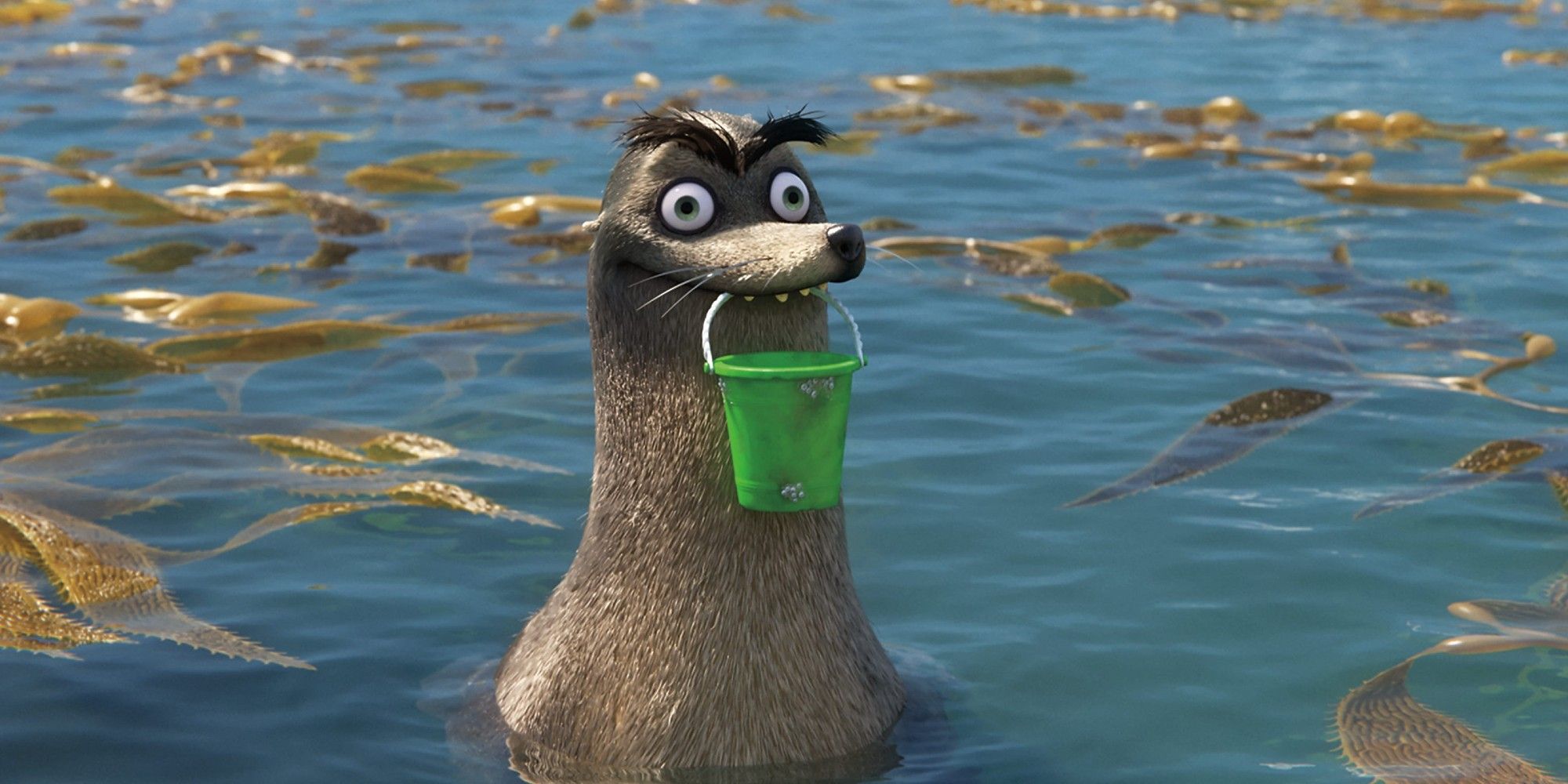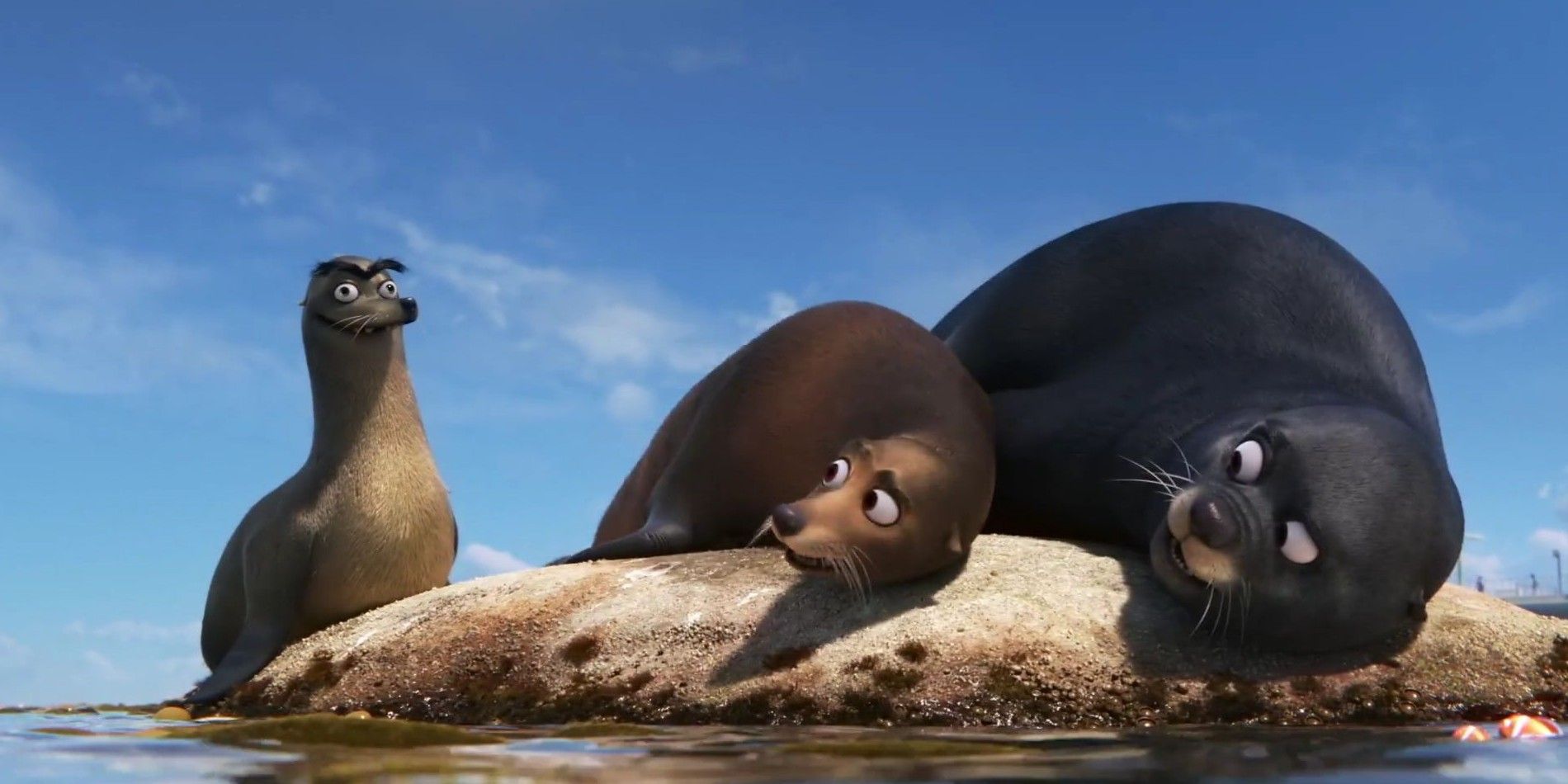Why did Gerald from Finding Dory generate so much controversy? Finding Dory – the long-awaited sequel to Pixar’s Finding Nemo – finally arrived in 2016. The film follows the adventures of its forgetful titular fish (Ellen DeGeneres) as she tries to reunite her long-lost parents Jenny (Diane Keaton) and Charlie (Eugene Levy). With the help of her clownfish friends Marlin (Albert Brooks) and Nemo (Hayden Rolence) – plus a handful of hazy memories – Dory embarks on a mission that takes her across the Pacific Ocean from the Great Barrier Reef to California.
Finding Dory proved to be yet another hit for Pixar. The movie received plenty of glowing reviews and banked more than $1 billion at the box office, a feat that ranks it as one of the top ten highest-grossing animated features of all time. However, the sequel had its fair share of critics who took issue with the way a certain minor Finding Dory character was depicted.
The Finding Dory character in question is a California sea lion named Gerald, whose vocal effects were provided by Pixar editor Torbin Xan Bullock. Gerald only appears in a handful of scenes during which he’s usually found attempting to lie on a rock occupied by fellow sea lions Fluke (voiced by Idris Elba) and Rudder (Dominic West). Throughout Finding Dory, Fluke and Rudder are pretty mean and dismissive towards Gerald and are consistently seen teasing him and shooing the poor sea lion away from “their” rock.
Following the movie's release in 2016, some Finding Dory viewers found the Pixar sequel’s portrayal of Gerald offensive. In an article for The Daily Beast, writer and lecturer in philosophy Elizabeth Picciuto detailed how she interpreted Gerald’s appearance – that is, his “unibrow … overbite, and somewhat misaligned eyes” – and the fact he carries a child’s pail everywhere he goes as evidence of the character having a cognitive disability. Picciuto further noted that Fluke and Rudder’s treatment of Gerald was bullying, while Slashfilm writer David Chen observed that Gerald was “coded to appear stupid” and the sea lion’s scenes were played for laughs, which sent a message Finding Dory’s young audience that it’s okay to mock people who are different or disabled.
In a statement to Insider, Finding Dory director Andrew Stanton assured Pixar fans that Finding Dory's Gerald being coded as cognitively disabled was by no means intentional. Rather, Gerald was imagined as a geeky character Stanton said was reflective of Pixar’s animation nerds and subject to “the sort of playground rules that all of us nerds had to deal with growing up.” Whether that explanation flies with Finding Dory’s detractors is another matter.
The portrayal of Gerald from Finding Dory isn’t the only controversy Pixar’s fish-focused franchise has weathered. Finding Nemo also got flak for triggering a mass purchase of clownfish in the U.S. by ill-informed customers who found Nemo cute but had little knowledge of how to care for tropical fish or the environmental impact of harvesting them. With a third film in the Finding Nemo franchise, a possibility here’s hoping it’ll be a controversy-free Pixar release.


